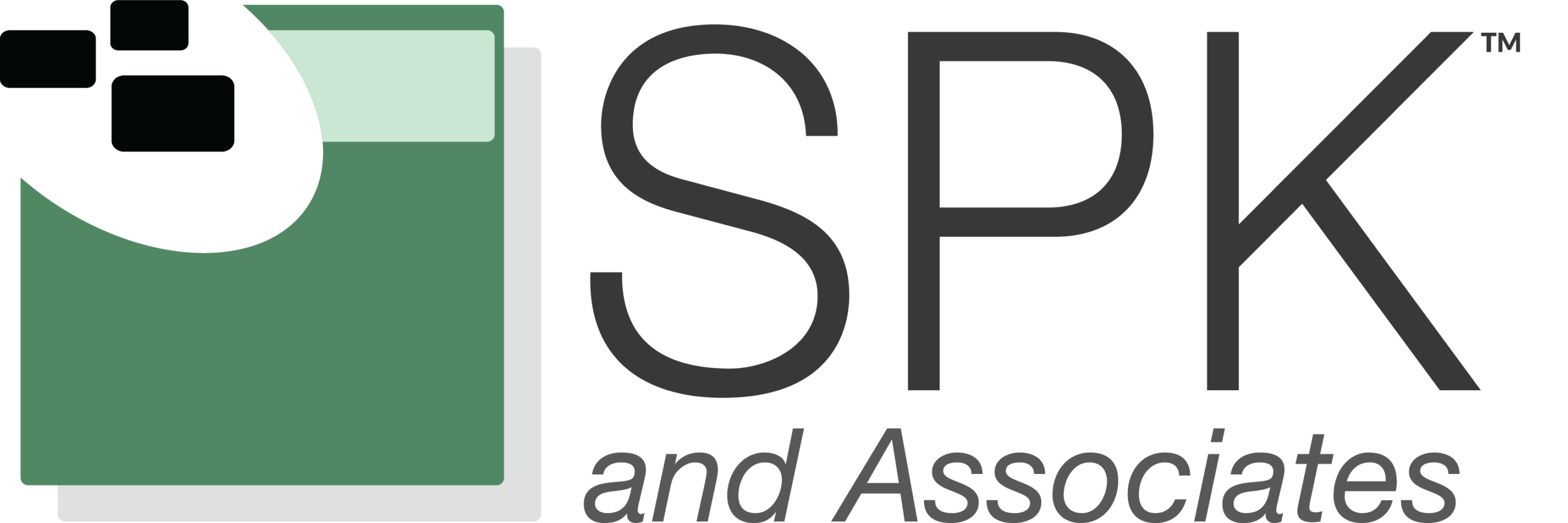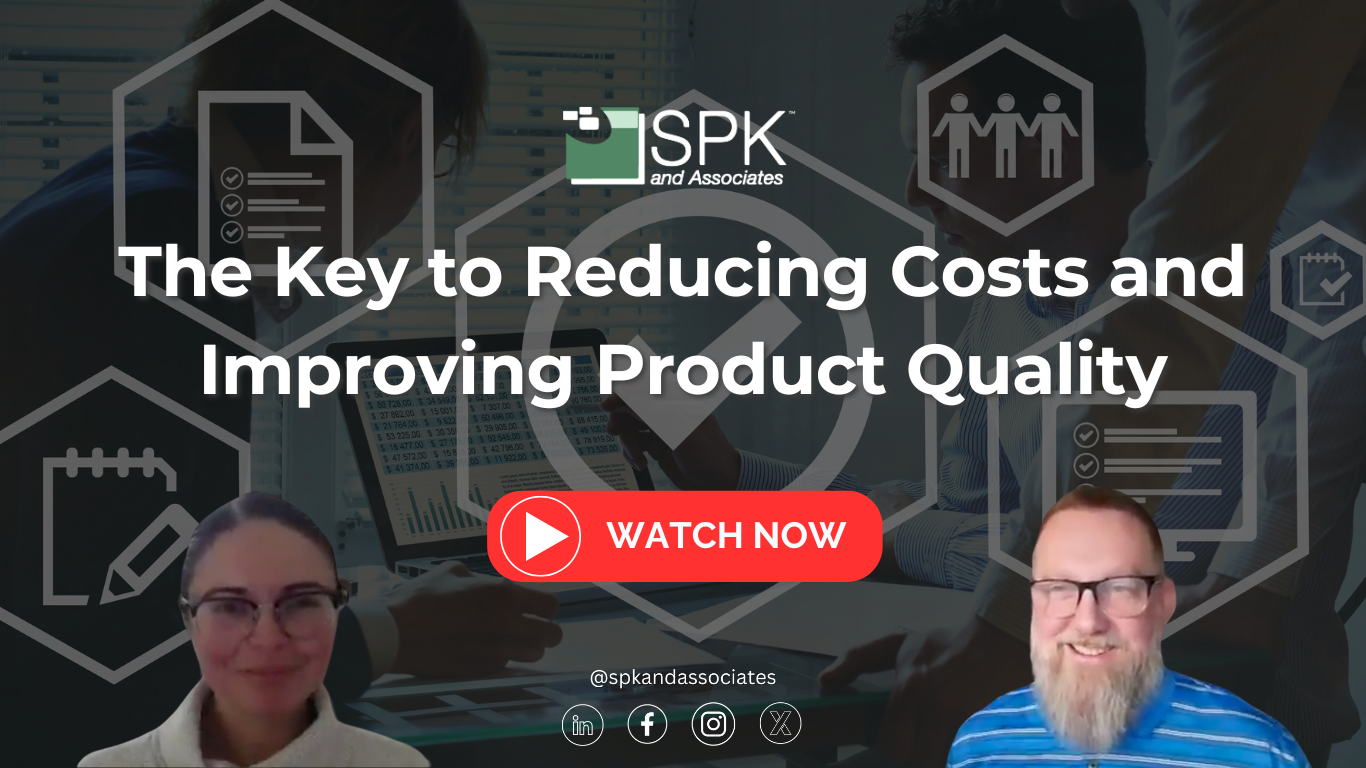Introduction
Michael Roberts: Hello and welcome to this SPK Vlog entitled The Key to Reducing Costs and Improving Your Quality. My name is Michael Roberts, Vice President of Sales and Marketing here at SPK and Associates. I’m here today with Daniela. Feel free to introduce yourself, Daniela.
Daniela: Hi everybody! I’m Daniela, and I am the CAD/PDM Guru for SPK and Associates.
Michael Roberts: You can say “Guru,” right? Or does somebody else have to call you a guru?
Daniela: Whichever!
Michael Roberts: Daniela is our CAD and PDM Guru here. So, Daniela and I are here today to talk about how to reduce risk and improve the quality of your products. A key component that we’re going to discuss revolves around how quickly you can find problems in your product development process.
Now, Daniela, as you know, our whole mission at SPK is to help our clients accelerate their time to market, ensure they are compliant, and reduce risks—all while helping create a quality product. So, let’s start at the beginning.
The Importance of Early Issue Detection
Michael Roberts: Daniela, how does early issue detection impact the overall cost of product development? What specific cost savings can engineering teams expect when they can detect issues extremely early?
Daniela: Great question, Michael. Simply put, late-stage design changes can be very costly. At this stage, you may already have prototypes, engineering hours, and QA/testing hours invested in the product. We want to try to avoid those late-stage design changes as much as possible.
One of the best tools to help avoid this is CAD. Regardless of the CAD suite you’re currently using, there are many solutions available to help run simulations. Early in the design stage, you can run tests to ensure you’re on the right path and that your engineers’ constraints are being met.
You also have simulations tailored to your industry, whether it’s fluid structural performance or thermal performance. There are a wide variety of suites that allow you to test your product early on and avoid costly changes after significant time and documentation have already been invested.
Benefits of Using CAD Tools
Some of the specific benefits of using CAD tools include:
- Faster Iteration: If you need to make a change, you can test it and ensure requirements are met early on.
- Cost Reduction: By catching flaws early, you can pivot and address shortcomings before they become major issues.
- Improved Quality: Detecting issues early allows for proactive design adjustments, leading to a better final product.
- Streamlined Workflow: Many simulation tools are integrated within CAD suites, meaning engineers don’t have to learn an entirely new program.
Some frequently used software suites in our experience include:
- PTC Creo – Comes with built-in simulation and analysis tools but is also highly customizable.
- Autodesk – Offers various simulation and analysis tools to better analyze your product.
- SolidWorks – Includes simulation capabilities like finite element analysis and optimization tools.
- Siemens NX & CATIA – Also feature integrated tools that streamline the design and validation process.
Automated Testing and Real-Time Analytics
Michael Roberts: You mentioned simulation tools within CAD suites. Are there any other technologies or practices that engineers can use for automated testing and real-time analytics to catch issues earlier?
Daniela: Absolutely! Here are a few examples:
- Real-Time Validation: Ansys Discovery Live provides real-time feedback during the design process, flagging certain requirements if they are not met. This is particularly useful for fluid dynamics and stress analysis.
- Automated Assembly Validation: Many CAD suites include tools that check for alignment issues and interferences within assemblies. This helps engineers detect errors before saving and committing to designs.
- AI & Machine Learning: Tools like Altair HyperWorks and Autodesk now incorporate AI to analyze designs and provide recommendations.
- Generative Design: Autodesk’s Generative Design allows engineers to explore design possibilities based on specific constraints, helping optimize designs before production.
Real-World Example of Early Issue Detection
Michael Roberts: Have you come across any real-world scenarios where early issue detection significantly improved product quality or customer outcomes?
Daniela: Yes! One example is from a medical device client—an industry where regulations are strict and timelines are tight. During a new product iteration, there was a concern about modeling efficiency to meet testing deadlines.
To address this, we used FEA tools for simulation, which provided quick validation. On my end, I utilized the built-in Design Checker in SolidWorks. By entering our constraints, we ensured the design met specifications early on, which streamlined the validation process.
Thanks to these tools, the iteration process went much smoother compared to the previous version. Using built-in tools like SolidWorks Simulation allowed us to move through the design phase efficiently and get the product to testing much faster.
Conclusion
Michael Roberts: Daniela, thank you for sharing your insights today! We appreciate you, and hopefully, our audience found this information valuable. Hopefully, they can now reduce costs, improve quality, and catch issues sooner in the product development process.
If you liked this video, please give it a thumbs up, subscribe, and be sure to follow us for more SPK and Associates content. Thank you, Daniela, and thank you to our audience. Until next time!







